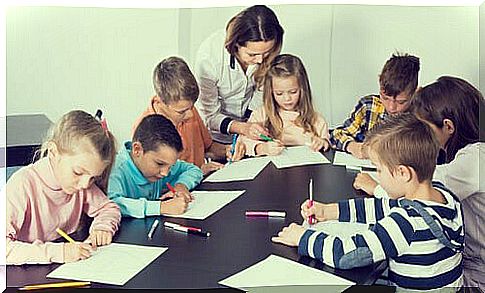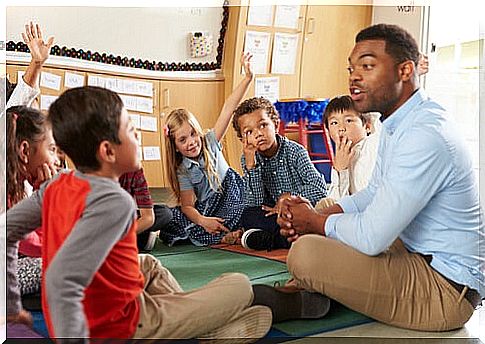Why Is Control Essential In The Classroom?

Effective classroom monitoring maximizes children’s learning opportunities. On the other hand, a saturated, complex and potentially chaotic classroom is an invitation to possible problems that can interfere with education. For this reason, educational psychologists have been widely concerned with fostering a positive environment in the classroom.
A basic aspect of achieving control in the classroom is knowing how the classroom really works. To do this, it is necessary to explain the characteristics that can cause problems in these spaces. So before talking about how you can manage control in the classroom, let’s examine these features.
The six characteristics of Walter Doyle
The psychologist Walter Doyle raised six characteristics that reflect the complexity of a classroom and how these are related to the appearance or not of problems. Knowing them will help us to understand what a classroom is like and above all, how the teacher must deal with it. They are as follows:
- The classrooms are multidimensional. The classrooms are the scenes of many activities of diverse nature. We can meet from academic activities (reading, writing, mathematics …) to social activities (games, talks with friends …).
- The activities occur simultaneously. In the classroom activities take place simultaneously. A group of students may be writing on your site; another, commenting on a task with the teacher or even a student may be bothering another and perhaps others are talking to each other.

- Events happen quickly. Events occur quickly in classrooms and often require an immediate response. Many conflicts can appear spontaneously without prior notice. For example, have two students start arguing over possession of a notebook.
- Events are often unpredictable. Even if daily activities are carefully planned and well organized, there are always going to be unforeseen events. For example, an alarm that sounds, a computer that does not work, a heater that breaks, etc. These events can generate a multitude of conflicts if you do not have a flexible and dynamic attitude in the classroom.
- There is little privacy. The classroom is a public place where students observe everything that happens. The way the teacher manages control in the classroom will be continually judged by the class. Value judgments about the justice or injustice of the teacher’s actions will affect the proper functioning of the class.
- The classrooms have memory. Students have memories of what has happened in class on previous occasions. Understanding how the past influences the future is essential to understanding how a classroom works. It is important that teachers control the classroom today, to influence learning tomorrow.
Managing control in the classroom
An essential aspect to manage control in the classroom is that the teacher takes advantage of the first days and weeks of the school year. During this period, you will have two very important goals to accomplish:
- Talk about the procedure and rules with the class to cooperate together in developing them.
- Get students to actively participate in all learning activities. Thanks to this, a classroom can be promoted without problems and with a positive environment.

However, it is not worth just having a good start. It is essential that, throughout the course, the teacher responds to the demands that appear in class. If this is not the case, discipline problems will be triggered that will make it difficult for students to learn. To meet these demands, the teacher has to keep two main goals in mind:
- Help students spend more time learning and less time on goalless activities. Academic time management is essential for both the teacher and the students. Within classrooms there can be a multitude of distractions that cause waste and thus worsen learning. It is essential that the teacher encourages students to be motivated and not reject the habit of learning for other activities.
- Prevent students from developing problems. Students are susceptible to academic and emotional problems. A cold and distant class can cause them to feel neglected. In addition, it must be borne in mind that the presence of a developmental disorder or difficulty affects both individual and group performance. Therefore, classroom control is also about fostering a positive environment where students feel comfortable and motivated.
Finally, to know if the teacher’s method is directed towards these goals, it is essential to have an evaluation system. A continuous and thorough evaluation helps to see possible faults and correct them on the spot. It would be irresponsible not to monitor adequately if the control in the classroom is according to the needs of the students.









